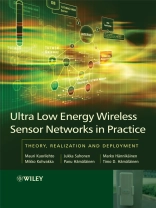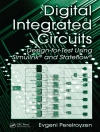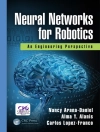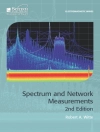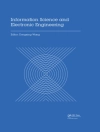Finally a book on Wireless Sensor Networks that covers real
world applications and contains practical advice!
Kuorilehto et al. have written the first practical
guide to wireless sensor networks. The authors draw on their
experience in the development and field-testing of autonomous
wireless sensor networks (WSNs) to offer a comprehensive reference
on fundamentals, practical matters, limitations and solutions of
this fast moving research area.
Ultra Low Energy Wireless Sensor Networks in
Practice:
* Explains the essential problems and issues in real wireless
sensor networks, and analyzes the most promising solutions.
* Provides a comprehensive guide to applications, functionality,
protocols, and algorithms for WSNs.
* Offers practical experiences from new applications and their
field-testing, including several deployed networks.
* Includes simulations and physical measurements for energy
consumption, bit rate, latency, memory, and lifetime.
* Covers embedded resource-limited operating systems, middleware
and application software.
Ultra Low Energy Wireless Sensor Networks in Practice
will prove essential reading for Research Scientists, advanced
students in Networking, Electrical Engineering and Computer Science
as well as Product Managers and Design Engineers.
Tabla de materias
Preface.
List of Abbreviations.
PART I. INTRODUCTION.
1. Introduction.
1.1 Overview of Wireless Technologies.
1.2 TUTWSN.
1.3 Contents of the Book .
PART II. DESIGN SPACE OF WSNS.
2. WSN Properties.
2.1 Characteristics of WSNs.
2.2 WSN Applications.
2.3 Requirements for WSNs.
3. Standards and Proposals.
3.1 Standards.
3.2 Variations of Standards.
4. Sensor Node Platforms.
4.1 Platform Components.
4.2 Existing Platforms.
4.3 TUTWSN Platforms.
4.4 Antenna Design.
5. Design of WSNs.
5.1 Design Dimensions.
5.2 WSN Design Flow.
5.3 Related Research on WSN Design.
5.4 WSN Evaluation Methods.
5.5 WSN Evaluation Tools.
PART III. WSN PROTOCOL STACK.
6. Protocol Stack Overview.
6.1 Outline of WSN Stack.
7. MAC Protocols.
7.1 Requirements.
7.2 General MAC Approaches.
7.3 WSN MAC Protocols.
8. Routing Protocols.
8.1 Requirements.
8.2 Classifications.
8.3 Operation Principles.
8.4 Summary.
9. Middleware and Application Layer.
9.1 Motivation and Requirements.
9.2 WSN Middleware Approaches.
9.3 WSN Middleware Proposals.
10. Operating Systems.
10.1 Motivation and Requirements.
10.2 Existing OSs.
11. Qo S Issues in WSN.
11.1 Traditional Qo S.
11.2 Unique Requirements in WSNs.
11.3 Parameters Defining WSN Qo S.
11.4 Qo S Support in Protocol Layers.
11.5 Summary.
12. Security in WSNs.
12.1 WSN Security Threats and Countermeasures.
12.2 Security Architectures for WSNs.
12.3 Key Distribution in WSNs.
12.4 Summary of WSN Security Considerations.
PART IV. TUTWSN.
13. TUTWSN MAC Protocol.
13.1 Network Topology.
13.2 Channel Access.
13.3 Frequency Division.
13.4 Advanced Mobility Support.
13.5 Advanced Support for Bursty Traffic.
13.6 TUTWSN MAC Optimization.
13.7 TUTWSN MAC Implementation.
13.8 Measured Performance of TUTWSN MAC.
14. TUTWSN Routing Protocol.
14.1 Design and Implementation.
14.2 Related Work.
14.3 Cost-Aware Routing.
14.4 Implementation.
14.5 Measurement Results.
15. TUTWSN API.
15.1 Design of TUTWSN API.
15.2 TUTWSN API Implementation.
15.3 TUTWSN API Evaluation.
16. TUTWSN Sensor OS.
16.1 Sensor OS Design.
16.2 Sensor OS Implementation.
16.3 Sensor OS Performance Evaluation.
16.4 Lightweight Kernel Configuration.
16.5 Sensor OS Bootloader Service.
17. Cross-layer Issues in TUTWSN.
17.1 Cross-layer Node Configuration.
17.2 Piggybacking Data.
17.3 Self-configuration with Cross-layer Information.
18. Protocol Analysis Models.
18.1 PHY Power Analysis.
18.2 Radio Energy Models.
18.3 Contention Models.
18.4 Node Operation Models.
18.5 Summary.
19. WISENES Design and Evaluation Environment.
19.1 Features.
19.2 WSN Design with WISENES.
19.3 WISENES Framework.
19.4 Existing WISENES Designs.
19.5 WISENES Simulation Results.
PART V. DEPLOYMENT.
20. TUTWSN Deployments.
20.1 TUTWSN Deployment Architecture.
20.2 Network Self-diagnostics.
20.3 Security Experiments.
21. Sensing Applications.
21.1 Linear-position Metering.
21.1.3 Results.
21.2 Indoor-temperature Sensing.
21.3 Environmental Monitoring.
22. Transfer Applications.
22.1 TCP/IP for TUTWSN.
22.2 Realtime High-performance WSN.
23. Tracking Applications.
23.1 Surveillance System.
23.2 Indoor Positioning.
23.3 Team Game Management.
PART VI. CONCLUSIONS.
24. Conclusions.
References.
Index.
Sobre el autor
Timo D. Hämäläinen is Professor and Institute
Vice President at Tampere University of Technology, Finland. Timo
acted as a senior research scientist and project manager at TUT
from 1997-2001. In 2001 he was nominated full professor at
TUT/Institute of Digital and Computer Systems. He heads the DACI
research group that focuses on three main lines: wireless local
area networking and wireless sensor networks, high-performance
DSP/HW based video encoding, and interconnection networks with
design flow tools for heterogeneous So C platforms. He has published
over 30 refereed international journals and over 150 conference
publications.
Marko Hännikäinen is Senior Research Scientist
and Mauri Kuorilehto, Mikko Kohvakka, Jukka Suhonen, Panu
Hämäläinen are all Research Scientists at Tampere
University of Technology, Finland.
